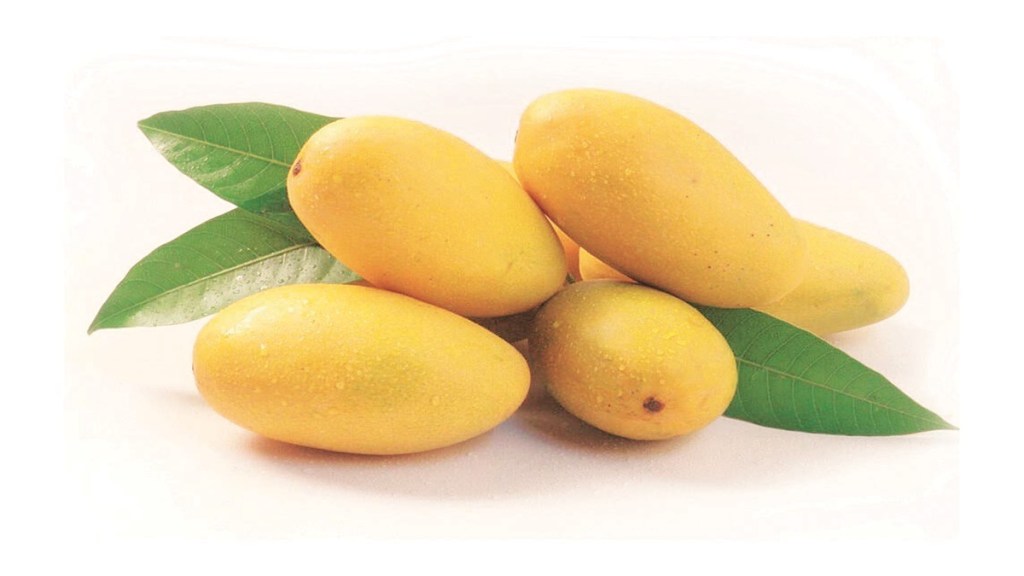Everyone loves mangoes. Whether it’s dasheri, langra, chausa or alphonso, the king of fruits is savoured in almost all regions of India. Juicy, pulpy, aromatic and sweet, mangoes are particularly in demand during the summer and monsoon months. You can have them ripe or raw, or even as an accompaniment such as in rasam or curries, or in cakes, chutneys and more.
With July 22 being celebrated as National Mango Day, now you got more reasons to enjoy the fruit in all its glory.
There are more than 1,500 mango varieties in India such as dasheri, langra, chausa, Bombay green and fazri that are commercially grown in north India; and banganapalli, totapuri, neelum, pairi, suvarnarekha, mulgoa, kalapadi and rumani in south India. Similarly, varieties such as alphonso, kesar, mankurad, fernandin and vanraj are grown in western India and langra, fazri, chausa, zardalu, himsagar and malda in eastern India.
Mangoes are rich in antioxidants, vitamins, minerals and carbohydrates. So, that also makes them a favourite among the health-conscious lot.
We can go on and on talking about the goodness of mangoes, but there are a number of myths that bring this fruit to the ‘unhealthy’ category and deprive many people of their irresistible taste. As such, even though they are a great comfort food, as they make one feel better, mangoes are not included in many people’s regular diets.
This applies to people especially with diabetes who feel that they should resist mangoes because of their sweet taste. However, experts say this is not always true and consuming the fruit in moderation is the key. Nutritionist Kavita Devgan says: “Mangoes have some big advantages over other fruits.
They contain more fibre, which helps you curb your appetite. They are slightly steep in calories (about 95 for a medium fruit), but low in fat and sodium, contain no cholesterol, and have more beta-carotenes. These powerful antioxidants are good for a healthy immune system and help repair the cell damage than any other fruit. Not only a source of one-fourth your vitamin A for the day, mangoes are also a great source of vitamin C. Mangoes are also high in carotenoids (like beta carotene) and bioflavonoids.”
As per Devgan, eating mangoes can give you a rich dose of potassium too. “Your body needs potassium to help regulate blood pressure and heartbeat, but many people don’t get enough of it from regular diet. Mangoes can give the much-needed potassium,” she adds.
There are also concerns about mangoes producing heat in the body or raising the body temperature. However, Devgan says no fruit or food, not even mangoes, can cause extra heat in the body, and it has not been proven or there is any scientific evidence to back it. “The heat depends on an individual’s constitution and environment,” she adds.
Mangoes cause weight gain
Mangoes are known for properties such as phytochemicals that suppress fat cells and fat-related genes. However, one may feel heavy or full after eating mangoes because of their high-fibre content. It has an impressive nutrition profile and just 1% of fat.
Mangoes cause acne
Mangoes do not cause acne, but sometimes allergy-causing substances are found in the peel. Additionally, fortified juices have high glycemic index which can cause eruptions in acne-prone skin
Mangoes are high in sugar
This has mixed feedback. Mangoes can be harmful to people suffering from diabetes if not taken in moderation. Despite their health benefits, mangoes are high in carbohydrates which can cause blood sugar levels to rise but fibre in the fruit can restrict the limit of sugar absorption. Experts feel that the low glycemic index (GI) make mangoes worth eating. A GI of 70 or more is considered high, foods with a GI of 56 to 69 are considered medium, and those with a GI of 55 or less are considered low. Mangoes have a GI of 51, which falls under the low category, making them a healthy option
KNOW YOUR MANGO
Bombay green
Found in north India and also called Malda, it is a good quality and early season variety. It is popular for its rich aromatic flavour and oblong shape
Himsagar
This one comes from Bengal. It is a medium-sized yellow fruit, and its fibrous quality is similar to langra. Himsagar is used to make a sweet called aam sattva and a snack called aam papad, besides chutneys and pickles
Kishen bhog
This one comes from Murshidabad in West Bengal. The uniqueness lies in its weight as each piece of mango is large, weighing 300-400 gm, and is greenish-yellow, sweet in taste
Dasheri
This one comes from a village near Lucknow. The origin goes back in time when the nawabs in the 18th-century Lucknow used to grow these mangoes in their gardens. The fruit varies from small to medium, and is a good mid-season variety
Alphonso
This one is a mid-season variety that comes from Maharashtra. Alphonso, also known as hapoos or kagdi happus, has a rich sweet flavour and a light yellow creamy texture. It is an expensive variety because of its aroma and taste, and costs anywhere between `7,000 and `10,000 per box of two-four dozen mangoes
Kesar
A leading variety in Gujarat with a red blush, it is also called the ‘Gir Kesar’ as it is grown in the foothills of Girnar in Gujarat. The mango has a vibrant orange pulp and was given the geographical indication status in 2011
Langra
This variety is indigenous to Varanasi, Uttar Pradesh. In Bihar, it is called Malda because of its proximity to Malda in West Bengal. The variety is cultivated during mid-June to last half of July and has vibrant green skin. The variety has a rich, juicy pulp
THE LYCHEE STORY
lychee is a rich source of vitamin C, potassium, magnesium, copper and flavonoids. However, in the recent past, the fruit has been in the news for the wrong reasons.
In 2019, over 40 children in Bihar’s Muzaffarpur died after being infected by a deadly brain disease reportedly linked to a toxic substance found in lychees. The children showed symptoms of acute encephalitis syndrome (AES), which causes inflammation of the brain and fever. Experts saw a similar outbreak in lychee-growing regions of Bangladesh and Vietnam.
However, doctors say the outbreak was also influenced by other factors such as high humidity, heat, poor nutritional status and environmental factors. These, combined with consumption of lychees, may have contributed to the occurrence and severity of the illness.
Dr Priyanka Rohatgi, chief nutritionist, Apollo Hospitals, says, “Presence of a naturally occurring toxin called hypoglycin A in lychee inhibits the body’s ability to produce glucose by interfering with the normal gluconeogenesis process. Gluconeogenesis is the process through which the body produces glucose from non-carbohydrate sources when blood glucose levels are low. This can cause seizures, altered mental status and encephalopathy.
In most cases, consuming lychees in moderate amounts and as part of a balanced diet is not harmful to healthy individuals. But for vulnerable populations like malnourished kids, avoid consuming on an empty stomach and take it as part of a well-balanced meal that includes other nutrients, including carbohydrates and proteins, to help stabilise blood glucose levels.








